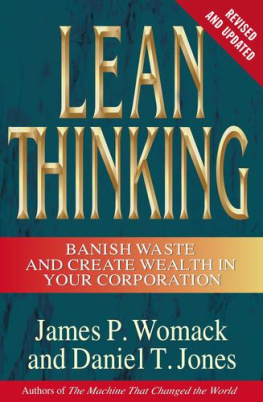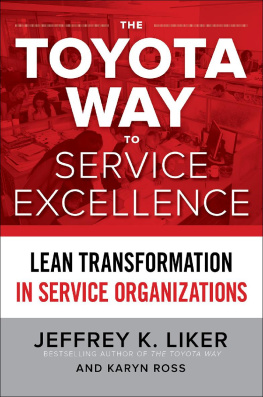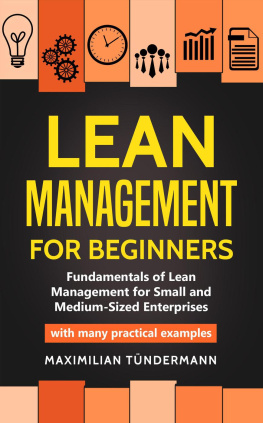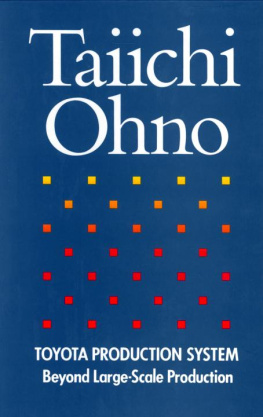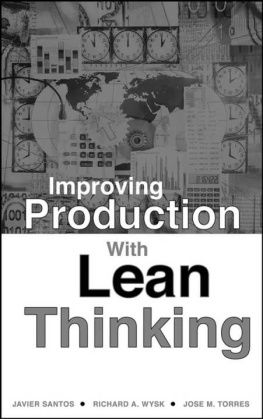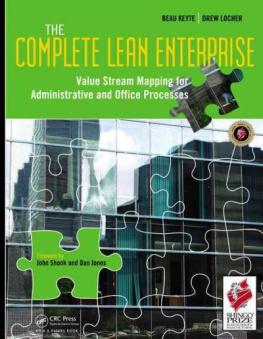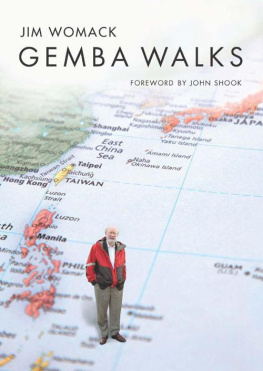Foreword 2007
Why Toyota Won: A Tale of Two Business Systems
In 1990, when The Machine That Changed the World was originally published, Toyota was half the size of General Motors and two-thirds the size of Ford. Today, as this book is reissued for a new generation of readers, Toyota has easily passed Ford and is surging past GM to become the largest and most consistently successful industrial enterprise in the world. This book tells why.
However, this is not simply the story of three giant firms in one giant industry. The great contribution of this volumethe reason it is as relevant today as when it was first publishedis that it clearly describes two fundamentally different business systems, two ways of thinking about how humans work together to create value. One systemmass productionwas pioneered by General Motors in the 1920s as it passed Ford to become the worlds largest industrial enterprise. This system was then widely copied and used by enterprises in practically every industry all over the globeincluding Ford and General Electricfor nearly seventy-five years. The other business systemlean productionwas pioneered by Toyota in the twenty years immediately after World War II and is now rapidly diffusing to every corner of the world.
In simplest terms, this book tells the story of mass versus lean and shows why lean is superior. It tells not only why Toyota won but how any organization embracing the complete system of lean production can also win.
To tell this story, the book provides a history and description of craft, mass, and lean production in the first three chapters and then describes the five elements of a lean business system in the next five chapters. These elements are designing the product, coordinating the supply chain, dealing with the customer, producing the product from order to delivery, and managing the combined enterprise. Every organization creating value for consumersincluding service organizations such as healthcaremust tackle these five tasks. So the lessons of the lean production system, combining all five elements in a mutually supportive way, have remarkably broad application. The machine that is changing the world is this complete lean business system, whose initial diffusion across the world is described in the three final chapters.
After nearly two decades in the market, it seems fair to say that Machine has now become a management classic. It is the third book in a historical sequence beginning with Peter Druckers Concept of the Corporation (1946), which first summarized the mass production business model, and continuing with Alfred Sloans My Years with General Motors (1965), in which the chief architect of this system explained it in very precise detail.
Given that Machine has become a historical artifact, it has not seemed appropriate to modify the text in light of what has happened and what has been learned in the years since its original publication. Thus the material between this Foreword and a new Afterword is exactly as it was in the original except for the correction of a few typographical and factual errors. However, in the Afterword we have added considerable additional material describing what the authors have learned about lean production since Machine was published.
By bringing the story up to date, we believe that we will enable todays readers to continue to draw valuable lessons from this volume. Machine describes a world-changing transformation in management thinking, relevant to everyones organization as we all seek to become lean producers.
D AN J ONES , G OODRICH , H EREFORD , UK
D AN R OOS , C AMBRIDGE , MA, USA
J IM W OMACK , C AMBRIDGE , MA, USA
BEFORE YOU BEGIN THIS BOOK
On a sunny afternoon in the fall of 1984, we stood on the granite front steps of the Massachusetts Institute of Technology and pondered the future. We had just concluded an international conference to announce the publication of our previous book, The Future of the Automobile, 1 in which we examined the problems facing the world motor-vehicle industry at that time.
Our findings about the automobile itself were guardedly optimistic. We concluded that technical means were on hand to solve the most pressing environmental and energy problems caused by the use of cars and trucks. There were still question marks about the long term, in particular about the greenhouse effect caused in part by carbon dioxide spewing from auto tailpipes, but we thought the automobile itself could adapt. However, we were much gloomier about the auto industry and the world economy.
We concluded that the auto industries of North America and Europe were relying on techniques little changed from Henry Fords mass-production system and that these techniques were simply not competitive with a new set of ideas pioneered by the Japanese companies, methods for which we did not even have a name. As the Japanese companies gained market share, they were encountering more and more political resistance. At the same time, the Western companies didnt seem to be able to learn from their Japanese competitors. Instead, they were focusing their energies on erecting trade barriers and other competitive impediments, which we thought simply delayed dealing with the real issue. When the next economic downturn came, we feared that North America and Europe would seal themselves off from the Japanese threat and, in the process, reject the opportunity for the prosperity and more rewarding work that these new techniques offer.
We felt that the most constructive step we could take to prevent this development from occurring would be to undertake a detailed study of the new Japanese techniques, which we subsequently named lean production, compared with the older Western mass-production techniques, and to do so in partnership with all the worlds motor-vehicle manufacturers. But how? As we were pondering this question on that sunny afternoon, one of the senior industry executives attending our conference approached uswith precisely this idea.
Why not also include governments worried about revitalizing their motor-vehicle industries, he asked, and raise enough funds to really do the job properly? Thus was born the International Motor Vehicle Program (IMVP) at Massachusetts Institute of Technology and, ultimately, this book.
THE INTERNATIONAL MOTOR VEHICLE PROGRAM
At the beginning of 1985, a fortuitous event at MIT provided the ideal institutional setting for the IMVP. A new Center for Technology, Policy and Industrial Development was formed with Daniel Roos as its first director. The Center had a bold charter: to go beyond conventional research to explore creative mechanisms for industry-government-university interaction on an international basis in order to understand the fundamental forces of industrial change and improve the policy-making process in dealing with change. The IMVP was an ideal program for the new Center to demonstrate a creative role for a university in working cooperatively with governments and industry.

